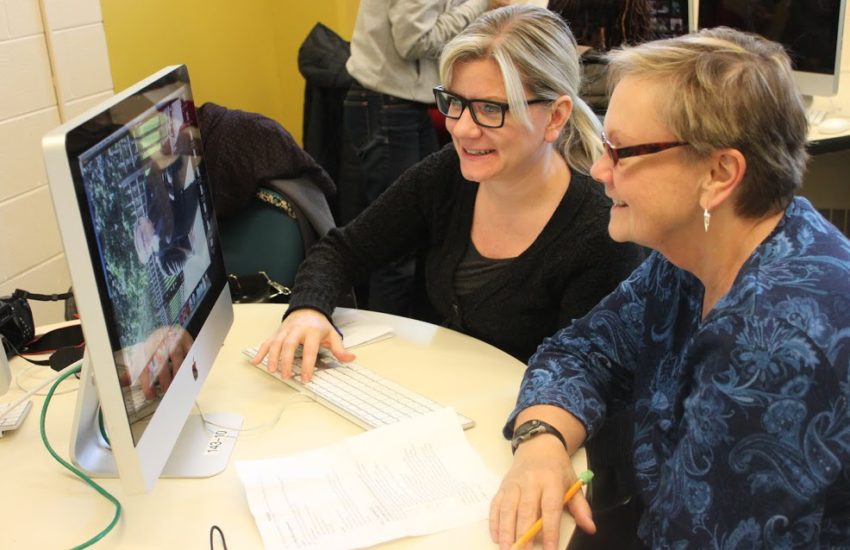In AQ 2013, students in NMS 509/WRD 530: Multimedia Content Strategy partnered with three nonprofit organizations to explore how organizations can strategically collect and use photographs and video. The course offered students the chance to apply practical and critical readings on content strategy to the real-world cases of their partner organizations.
The idea for this course came from Assistant Professor and Director of MA in WRD Lisa Dush’s interest in new media storytelling in organizations. Through her own research and experience working with nonprofits, Dush understood that nonprofit organizations often lack the time and resources to determine effective strategies for collecting, storing, and circulating multimedia content. Dush built the course on a service-learning model she had developed in her Digital Storytelling in Organizations courses, wherein nonprofit communications staff work with small student teams, together learning and exploring the utility of a new media practice.
Numerous nonprofits applied for the opportunity to work with NMS 509/WRD 530. The selected organizations, Chicago Battered Women’s Network (CBWN), St. Leonard’s Ministries: Michael Barrow Center (SLM), and Lawndale Christian Development Coalition (LCDC), attended class for a discussion of Kivi Leroux Miller’s book Content Marketing for Nonprofits, came to campus for two workshops—one on shooting and storing photographs and video and another on social media best practice—and received recommendation reports from their student teams for best practices going forward.
MA in WRD student Jeff Melichar worked with three classmates to address LCDC’s strategies for communicating a unified message with multimedia content and social media. Melichar said,“The organization had attempted to try numerous platforms (YouTube, Twitter, etc.), but never stayed focused on how they wanted to disseminate their messages. Their multimedia content was also scattered, since many people had images and video on their personal PCs, rather than using a centralized location.”
Melichar’s group recommended that LCDC focus their social media around a central story arc, use Facebook as their main platform, implement a detailed workflow for multimedia, and use a communications timeline and editorial calendar for internal consistency. The group also provided LCDC with concrete ideas for how to execute these recommendations.
Overall, Melichar said the course taught him an important lesson in adapting to situations in order to meet the needs of the client. He particularly enjoyed the challenge of writing the final recommendation report and he said, “There’s a rhetorical balance necessary when writing a recommendation report, since you want to “tell it as it is” but also stay aware that every org has strengths that can be developed, rather than only weaknesses that should be fixed. I think the [course’s] readings really helped us put that document together in a way that was accessible and immediately actionable.”
